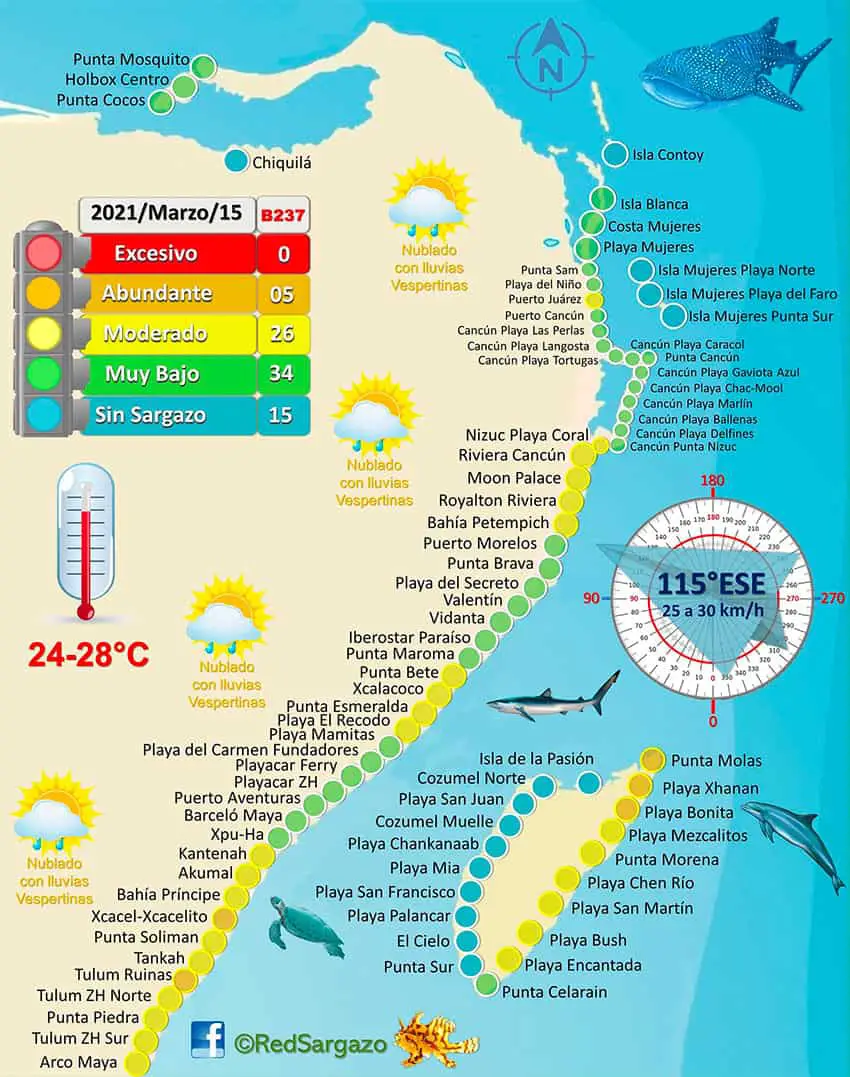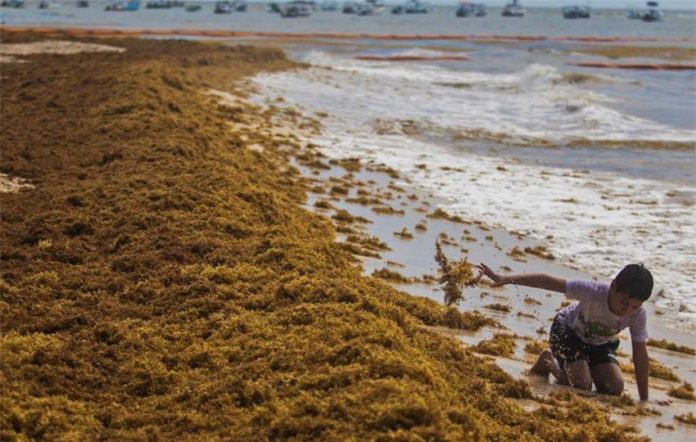Brigades of workers have begun removing sargassum from beaches in Quintana Roo after the unsightly, smelly seaweed made its first appearance of the 2021 sargassum season in late February.
Hotels, municipal governments and civil society groups have all started clearing sargassum from the Caribbean coastline to ensure that Quintana Roo’s white sand beaches are as they appear in travel brochures for tourists who are expected to flock to destinations such as Cancún, Playa del Carmen and Tulum for the Easter vacation.
“Private companies that work for hotels are already working with private money; they try to clean the beachfront [of the hotels] and keep it clean for the tourists,” Esteban Amaro, a marine biologist and chief of the the Cancún sargassum monitoring network, told the newspaper Reforma.
Municipal government brigades have also begin clearing sargassum while a navy vessel is removing masses of the weed from the sea.
Antonio Chávez Palomo, president of the Riviera Maya Hotel Association, said in an interview that hoteliers meet with navy officials every week to discuss the sargassum problem.

“What’s being done with the navy is to detect patches [of sargassum] from afar and they’re attacked with a vessel in accordance with an agreement we reached last year with the federal government and the navy,” he said.
Sargassum barriers installed off the coast also help to stop the seaweed from washing up on beaches.
So far this sargassum season, which runs from March to September, seaweed on beaches has not been a major problem, suggesting that the mitigation measures are working.
The sargassum monitoring network reported on Monday that there were no beaches in Quintana Roo with “excessive” amounts of sargassum and just five with “abundant” quantities. Three of the five beaches in the latter category are on the northeastern coast of Cozumel, an island off the coast of Playa del Carmen, while two are in the municipality of Tulum.
There were 26 beaches with “moderate” quantities of sargassum on Monday, 34 with “very low” amounts and 15 completely untainted by the brown seaweed that has plagued Mexico’s Caribbean coastline in recent years.
Sargassum is not usually considered a threat to human health but it is harmful to the environment because once it leaves the ocean it emits sulfuric acid and arsenic. The weed also attracts flies and other insects and gives off a potent stench as it decomposes, providing further incentive to clear it from beaches quickly.
Scientists say that global warming, ocean pollution and changing sea currents are all factors that have contributed to the growing quantities of sargassum seen on Mexican beaches in recent years.
Almost 18,000 tonnes of the seaweed, which drifts up to the Caribbean coast from the South Atlantic Ocean, were removed from Quintana Roo beaches and the state’s Caribbean sea waters last year, according to the Ministry of the Navy.
The Riviera Maya Hotel Association expects that this year won’t be as bad as recent ones for the arrival of sargassum but only two weeks into the 2021 season it remains to be seen if its prediction will come true.
Source: Reforma (sp), El Heraldo de México (sp)
